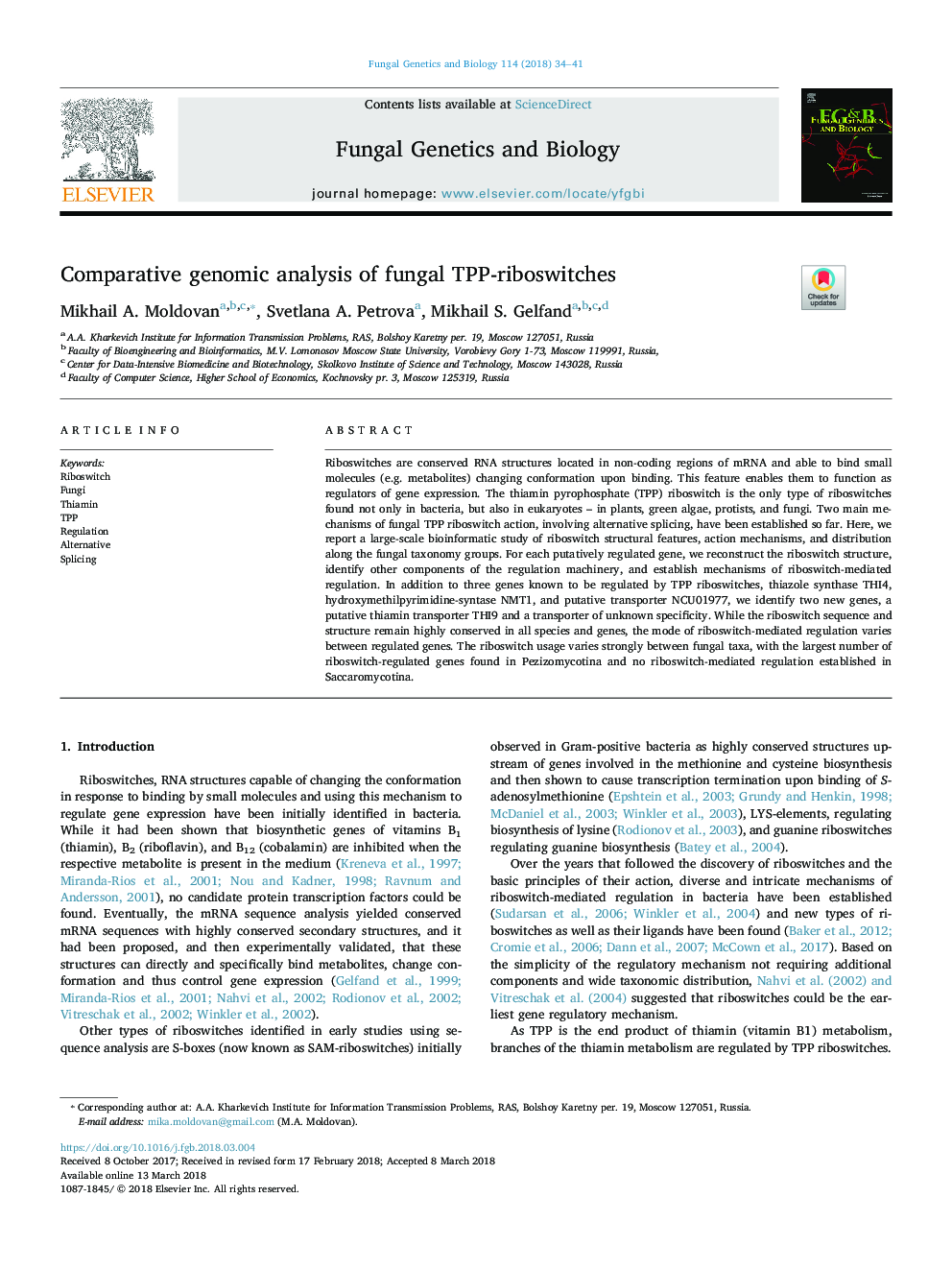| Article ID | Journal | Published Year | Pages | File Type |
|---|---|---|---|---|
| 8470430 | Fungal Genetics and Biology | 2018 | 8 Pages |
Abstract
Riboswitches are conserved RNA structures located in non-coding regions of mRNA and able to bind small molecules (e.g. metabolites) changing conformation upon binding. This feature enables them to function as regulators of gene expression. The thiamin pyrophosphate (TPP) riboswitch is the only type of riboswitches found not only in bacteria, but also in eukaryotes - in plants, green algae, protists, and fungi. Two main mechanisms of fungal TPP riboswitch action, involving alternative splicing, have been established so far. Here, we report a large-scale bioinformatic study of riboswitch structural features, action mechanisms, and distribution along the fungal taxonomy groups. For each putatively regulated gene, we reconstruct the riboswitch structure, identify other components of the regulation machinery, and establish mechanisms of riboswitch-mediated regulation. In addition to three genes known to be regulated by TPP riboswitches, thiazole synthase THI4, hydroxymethilpyrimidine-syntase NMT1, and putative transporter NCU01977, we identify two new genes, a putative thiamin transporter THI9 and a transporter of unknown specificity. While the riboswitch sequence and structure remain highly conserved in all species and genes, the mode of riboswitch-mediated regulation varies between regulated genes. The riboswitch usage varies strongly between fungal taxa, with the largest number of riboswitch-regulated genes found in Pezizomycotina and no riboswitch-mediated regulation established in Saccaromycotina.
Related Topics
Life Sciences
Biochemistry, Genetics and Molecular Biology
Cell Biology
Authors
Mikhail A. Moldovan, Svetlana A. Petrova, Mikhail S. Gelfand,
